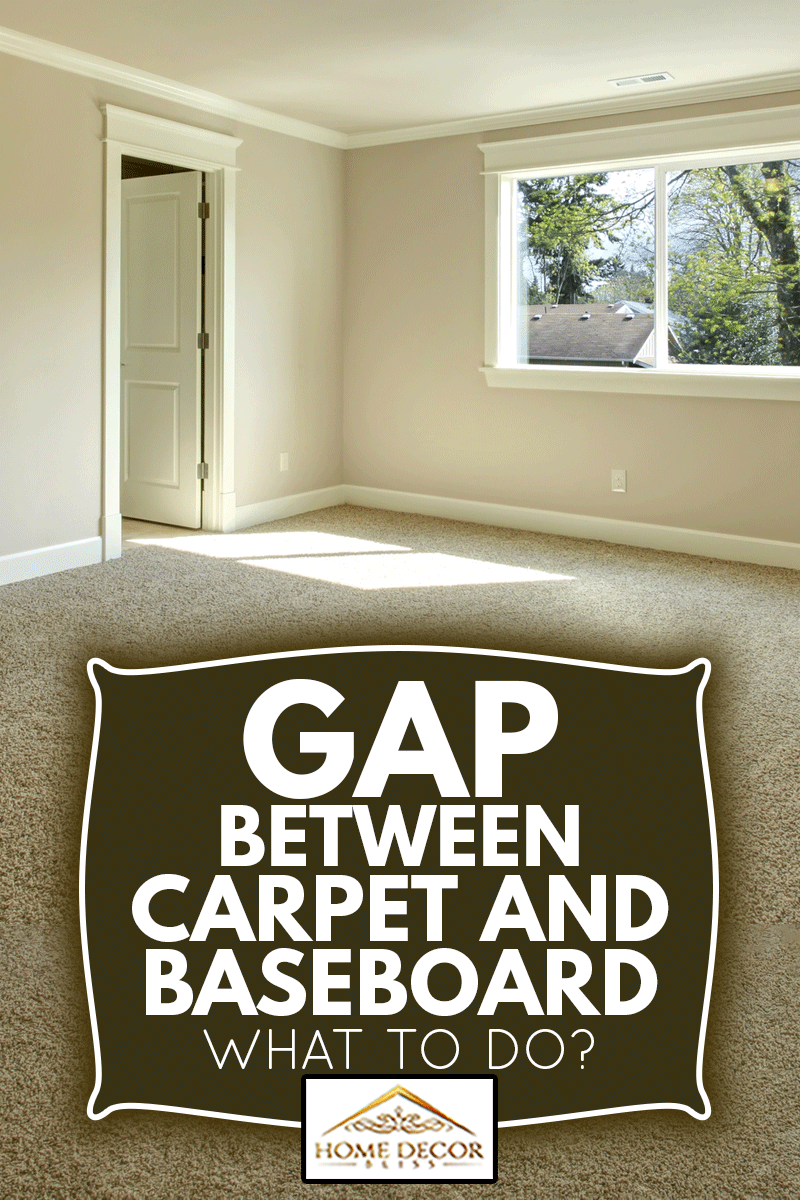After installing a carpet, you might notice that there is a gap between your flooring and the baseboard. When this happens, you may be wondering what can you do to correct this problem. We researched why this gap occurs and helpful solutions that are aesthetically pleasing. Learn more about carpet flooring, closing gaps, and creating a beautiful floor.
A gap between the carpet and baseboard occurs when the carpet is too thick to fit under the baseboard and needs to be trimmed. Measurements and allowances were inaccurate for the carpet and baseboard. Additionally, an older home may develop a growing gap between the baseboard and the flooring. Thankfully, there are some helpful solutions for this problem:
- Caulk the gap between the baseboard and carpet.
- Adjust or replace the baseboards.
- Use expanding foam to fill the gap.
- Add padding under the baseboards.
- Add molding to the baseboards.
If you discover a gap exists between the carpet and baseboard, you can fix this problem. Continue reading to learn more about remedying this problem.
Mind The Gap
When installing a carpet, it is best left up to professionals. However, if you choose to install carpet yourself, you may discover a gap between the carpet and the baseboard. Keep in mind, it is critical to take accurate measurements of the space, make allowances for the tack strips, padding, and any trim or baseboards installed.
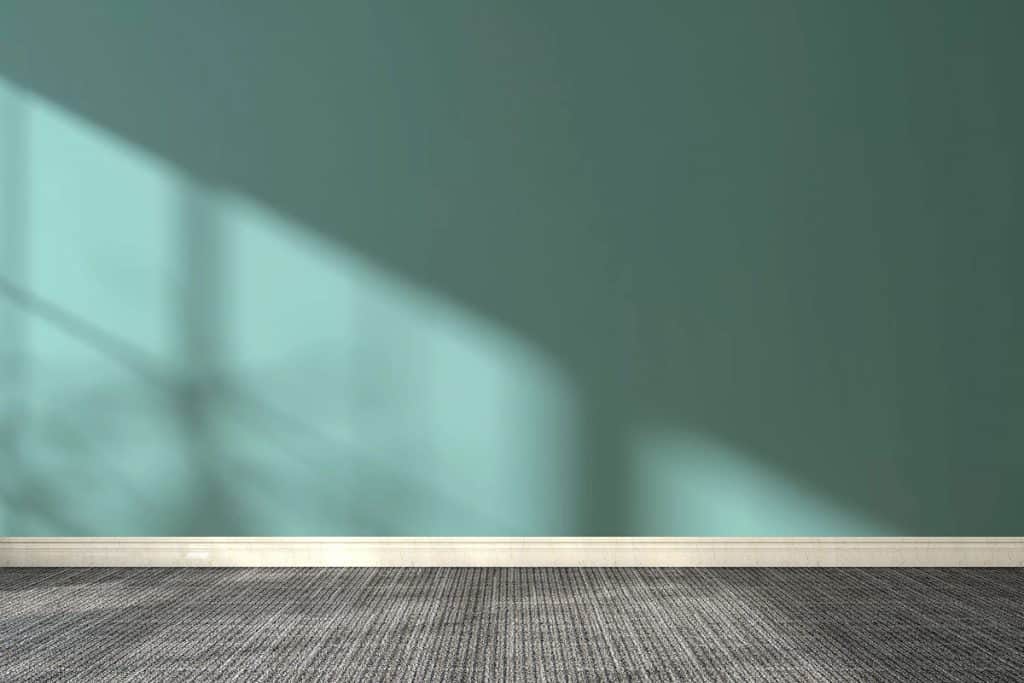
A gap may happen because the carpet needs to be trimmed, the baseboard needs adjusting, or the measurements are a little off. Not to worry, as there are methods to fill in a gap without suffering visually displeasing results.
According to building codes, a gap is necessary between the baseboard and the floor. The baseboard or molding should be installed a little higher than the surface of the floor for two main reasons. One, in case of flooding, this gap allows for the absorption of water. Two, carpet flooring needs to be tucked under the baseboard.
How Do You Fill The Gap Between Baseboard And Floor?
Take a good look at the size and severity of the gap between the baseboard and floor before choosing a solution. Depending on the specific reason why there is a gap, not all presented solutions are applicable.
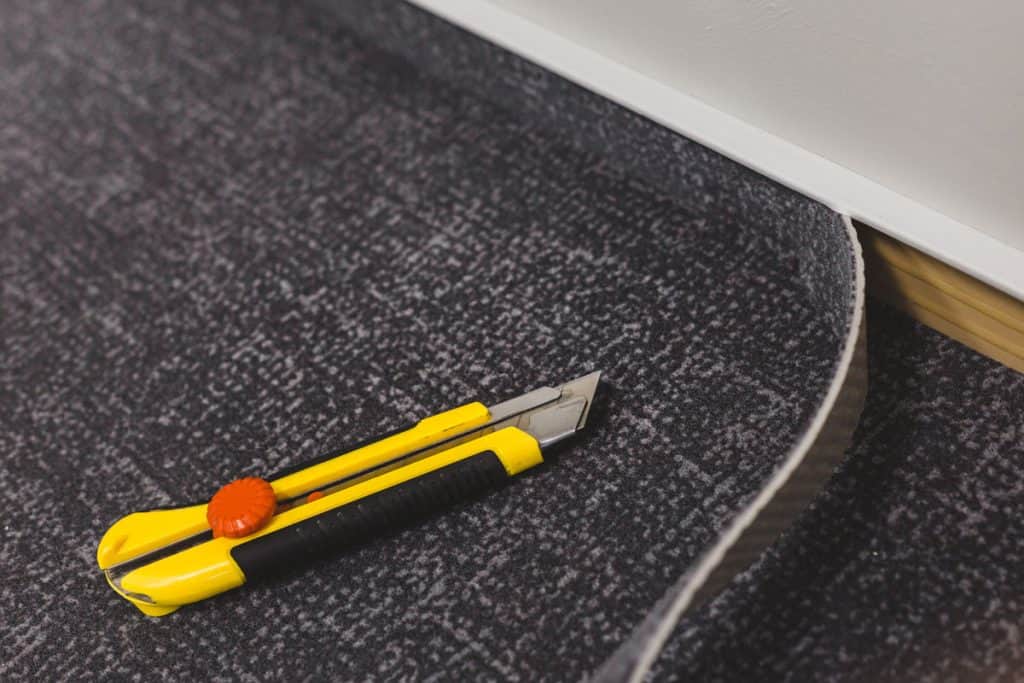
We may include affiliate links and curated AI content to highlight top design styles.
The baseboard might be too low or too high, causing a gap. The carpet might need to be stretched or is cut too short. Or, the baseboards might need to be larger, shifted about, or another layer of molding should be added to close any gaps. Look over your flooring to decide the best action to take to achieve beautiful, gap-free flooring.
1. Apply Caulk
Before you use this method, you will want to add a thin strip of painter's tape on the topmost part of your baseboards. Carefully apply a line of caulk between the gaps between the baseboard and carpet, and stuff the carpet into the space under the molding. Be careful not to get caulk on the carpet or outside of the molding. Be ready for a quick cleanup in case of an accident.
Check out this video to learn how to caulk a gap:
2. Adjust Or Replace The Baseboards
The baseboards are usually installed before putting down carpet or laminate flooring, with a little bit of a gap permitted. It is possible to install baseboards after laying down carpet, and sometimes they may need to be adjusted.
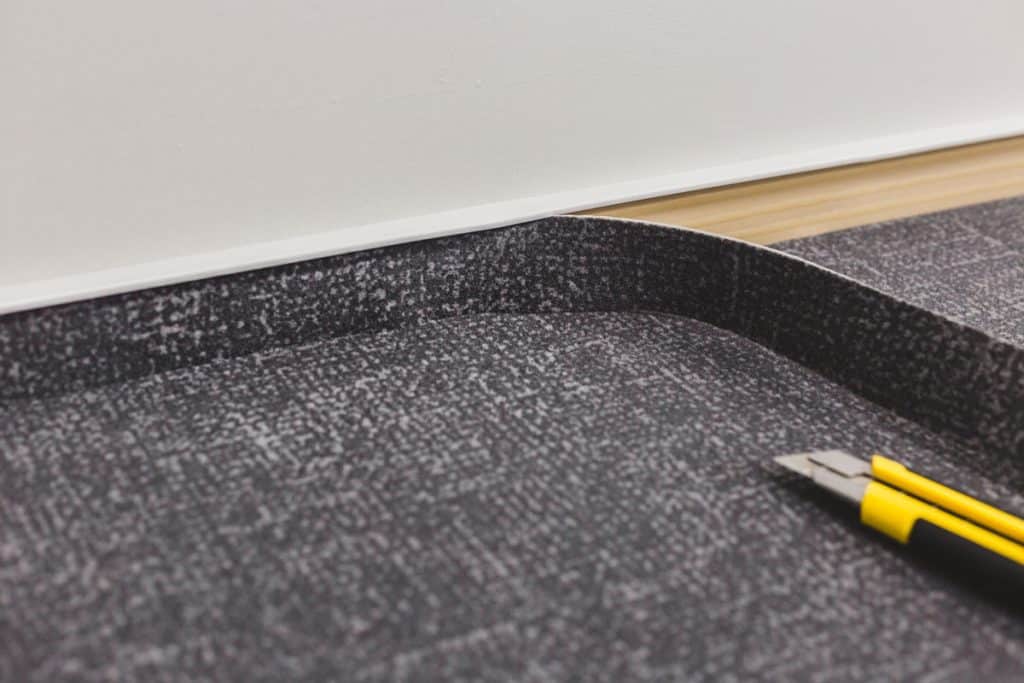
If you find that the baseboards are too low to tuck your carpet in, or too high and leave a very big gap, move them. If the baseboards are too small or too big for your carpet, replace them.
3. Use Expanding Foam
Take a bit of expanding foam and use it to fill in small gaps between carpet flooring and the baseboards. Take your time with this method and protect the carpet so you don't drop expanding foam in unwanted areas. Be ready to clean up as needed.
Use enough foam until the gaps are filled, so you can push the carpet in with a tighter fit under the baseboard. Wait until the foam is dry, cut off any excess insulation foam expanding beyond the baseboards, and tuck the carpet underneath to close off gaps.
Check out this expanding foam sealant on Amazon.
4. Add Padding Under The Baseboards
Another helpful trick to close off gaps is to lay additional padding under the baseboard. You will want to pull the carpet back a bit and tuck it back under the baseboards after adding the padding. Doing this creates a tighter fit between the baseboard and carpet as the carpet pushes into the extra padding.
Note: this method is a little out-of-the-box and may be frowned upon by a professional installation, but it has worked for some.
5. Add Additional Moulding
There is nothing wrong with adding another layer of trim or molding on top of pre-existing molding or baseboards to close a gap. Take careful measurements and decide on molding or trim that is aesthetically pleasing and closes any gaps between the carpet and baseboards.
Make sure that your carpet is fully stretched out and tucked under the baseboard. Carefully install the second layer of molding and nail it into place, locking down the carpet and initial baseboards.
Check out this video on how to add a layer of molding:
How Do You Fix Gaps In Carpet?
Over time, enough foot traffic may cause a carpet to buckle or bunch up in certain areas, pulling away from the baseboard and exposing gaps. If there is a gap in the carpet, it may be corrected after being pulled up and stretched out before being returned to its former position.
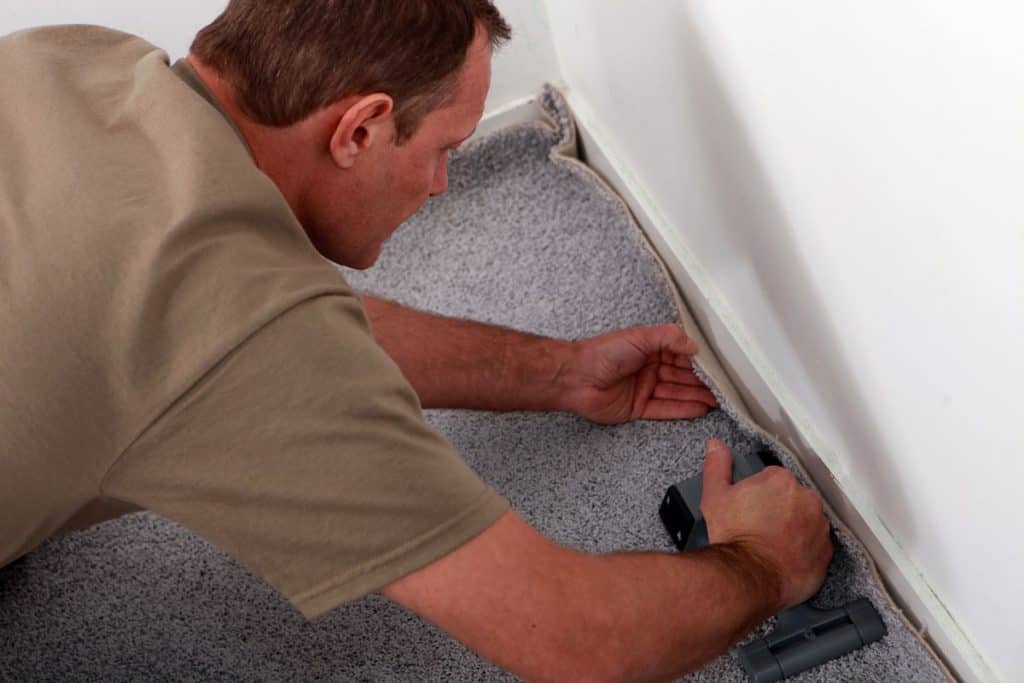
If you find that your carpet is cut too short, you might be able to patch the area with any leftover remnants of the installed carpet. Make sure that your patch fits the same direction and pattern and fills the gap. Use a carpet adhesive to keep the patch in place.
How High Should Baseboards Be For Carpet?
Common recommendations for the installation of baseboards call for a minimum gap of 1-inch. Note, this measurement usually allows for both carpet and padding to be tucked underneath the baseboard. Consider whether you wish to add rounds, an extra layer of trim, or a base shoe for a good fit. Others recommend that the baseboards be installed with a 3/8-inch gap for a snugger fit that leaves little to no gaps between the carpet and baseboards.
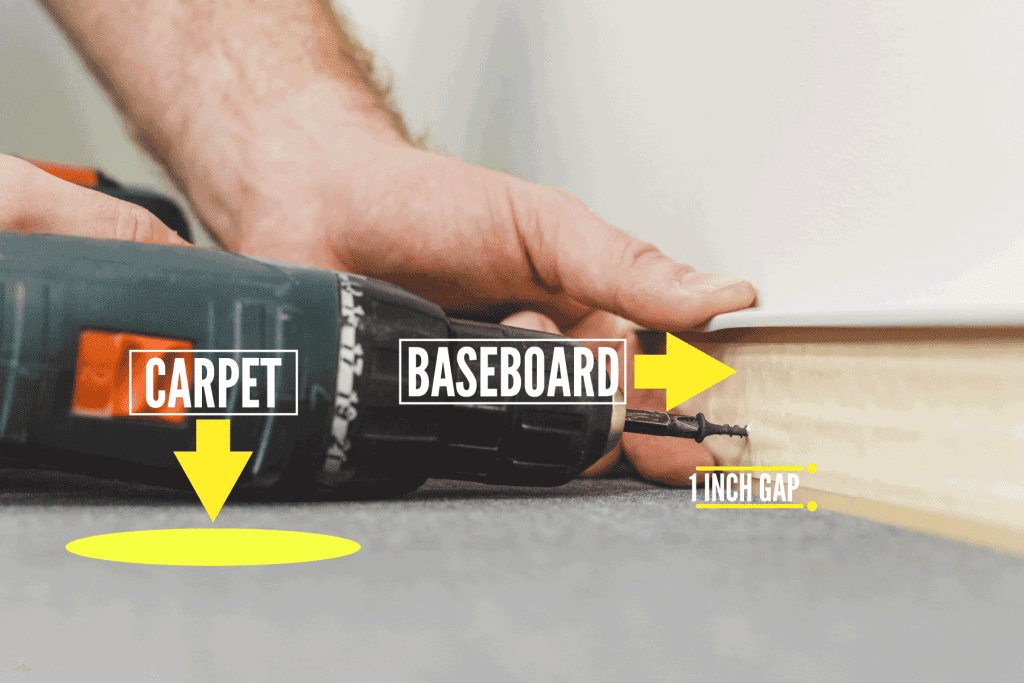
When possible, try to align the baseboards with the drywall and keep everything level. Depending on the thickness of your carpet and any areas that are uneven and not level, you may want to adjust the height of the baseboard. It may be better to install baseboards after the carpet if a room is not level.
Should Baseboards Be Installed Before Or After Carpet?
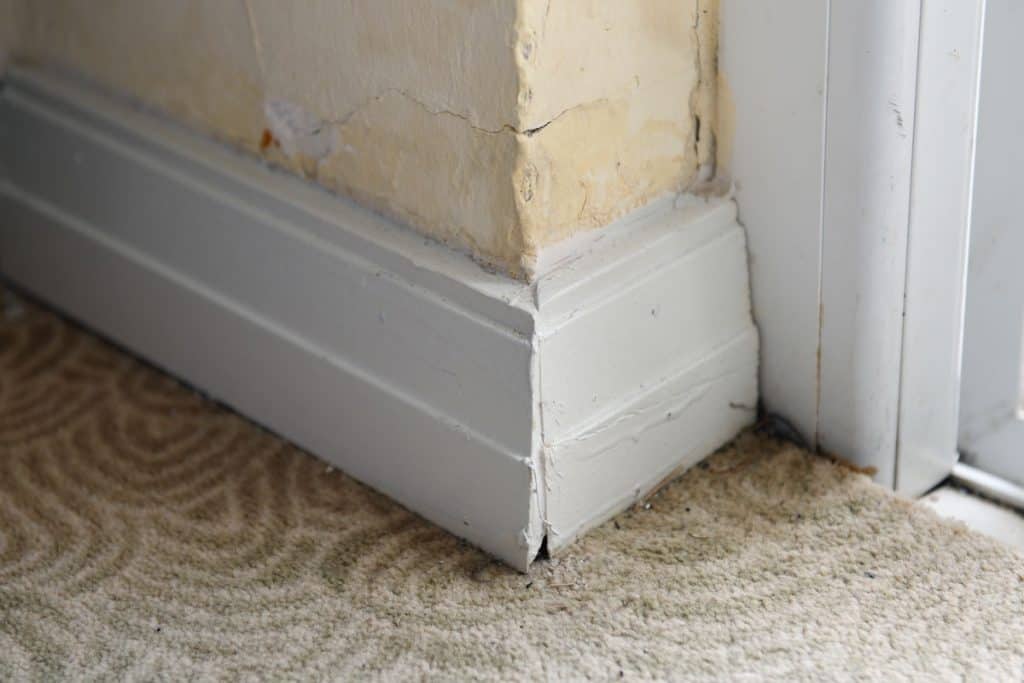
In Closing
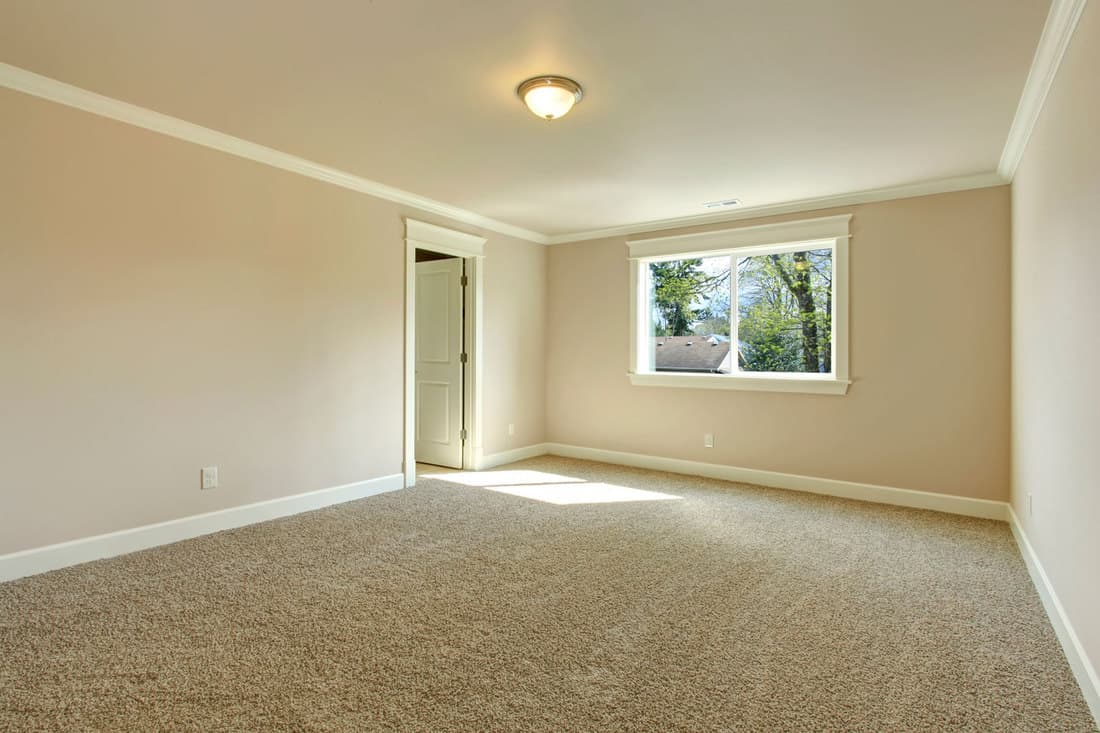
If you find a gap between your carpet and baseboard, don't panic thinking that you have to reinstall everything. Chances are, you can use caulk, adjust your baseboard, or stretch your carpet to close any unwanted gaps.
When installing carpet and baseboards, it is essential to take accurate measurements and not rush the job. If baseboards are too small or too high, or the carpet is too thick or too short, a gap may naturally happen. Thankfully, after doing a close inspection of your flooring you can choose the best solution.
Before you go, don't miss out on the following helpful articles.
How Long Does Carpet Glue Take To Dry?
How Far Should Should A Carpet Tack Strip Be From The Wall?
